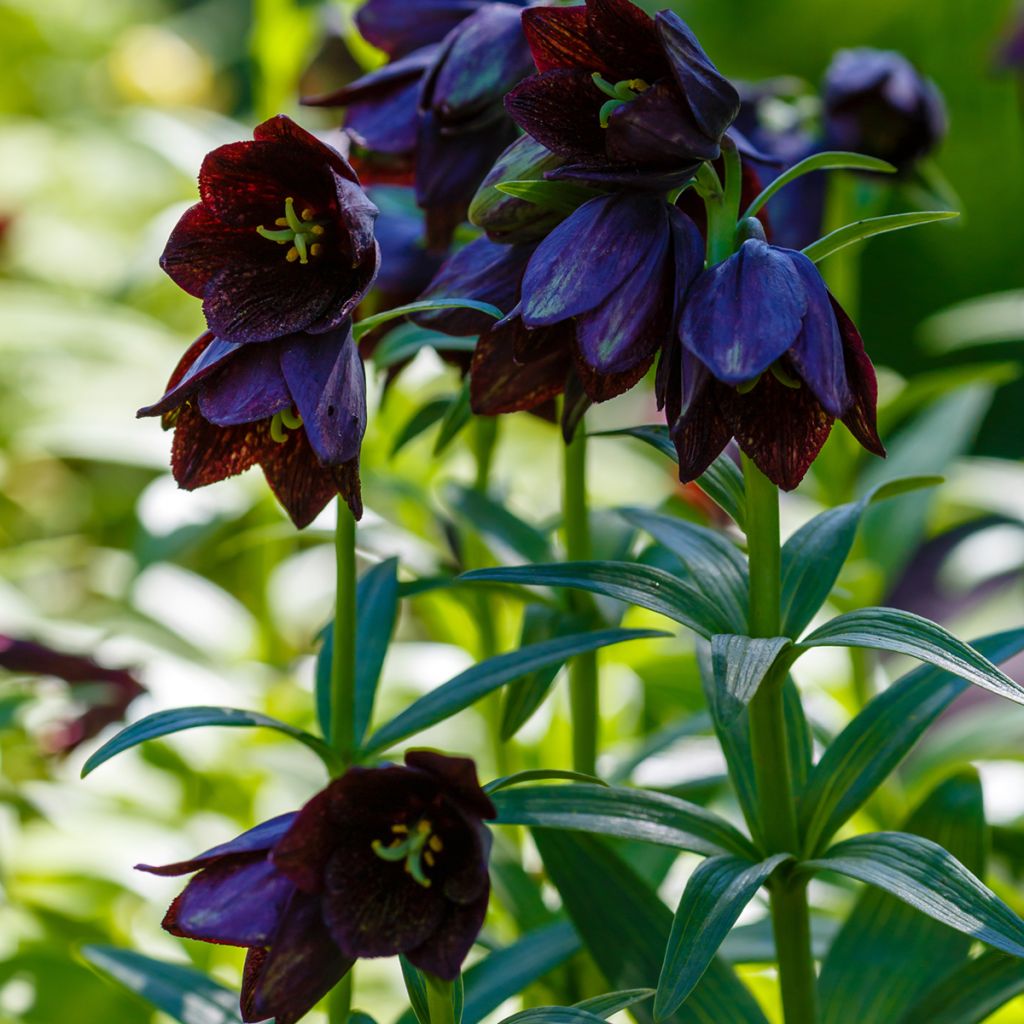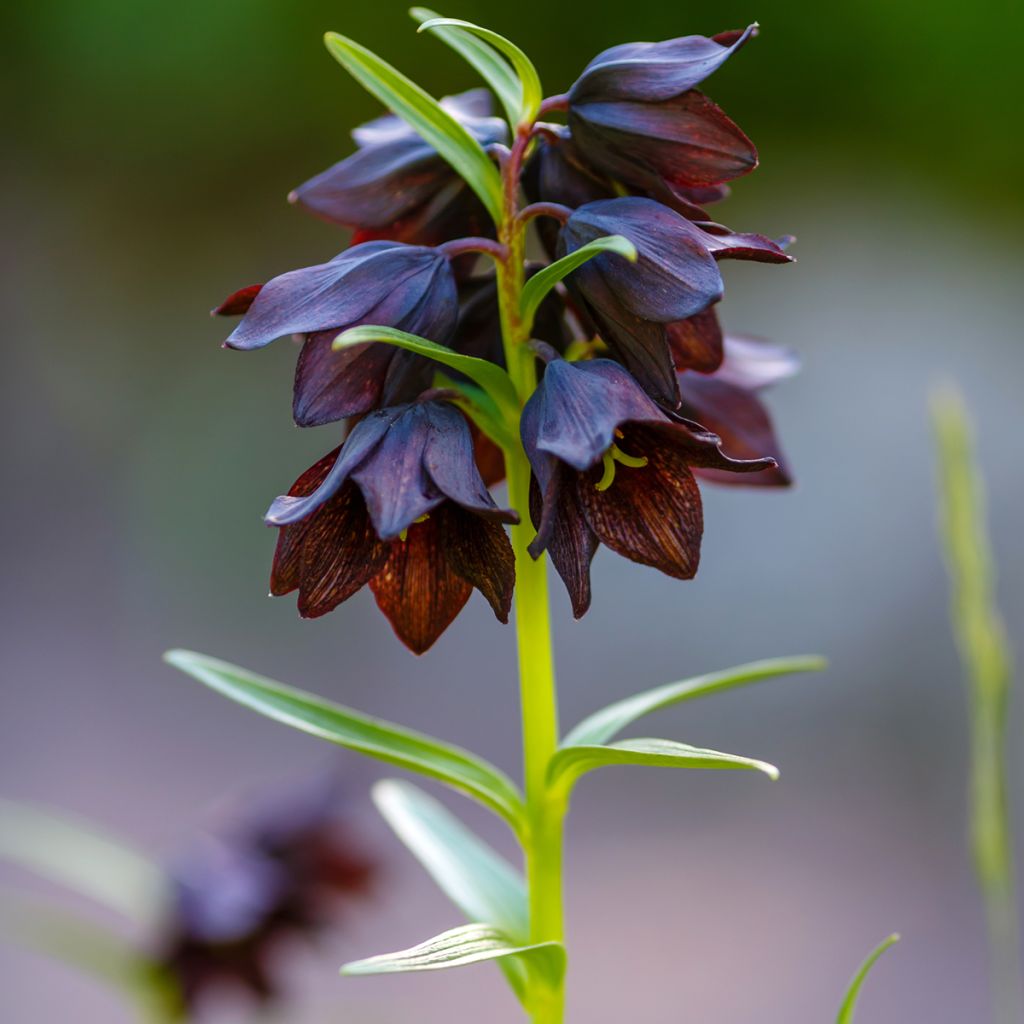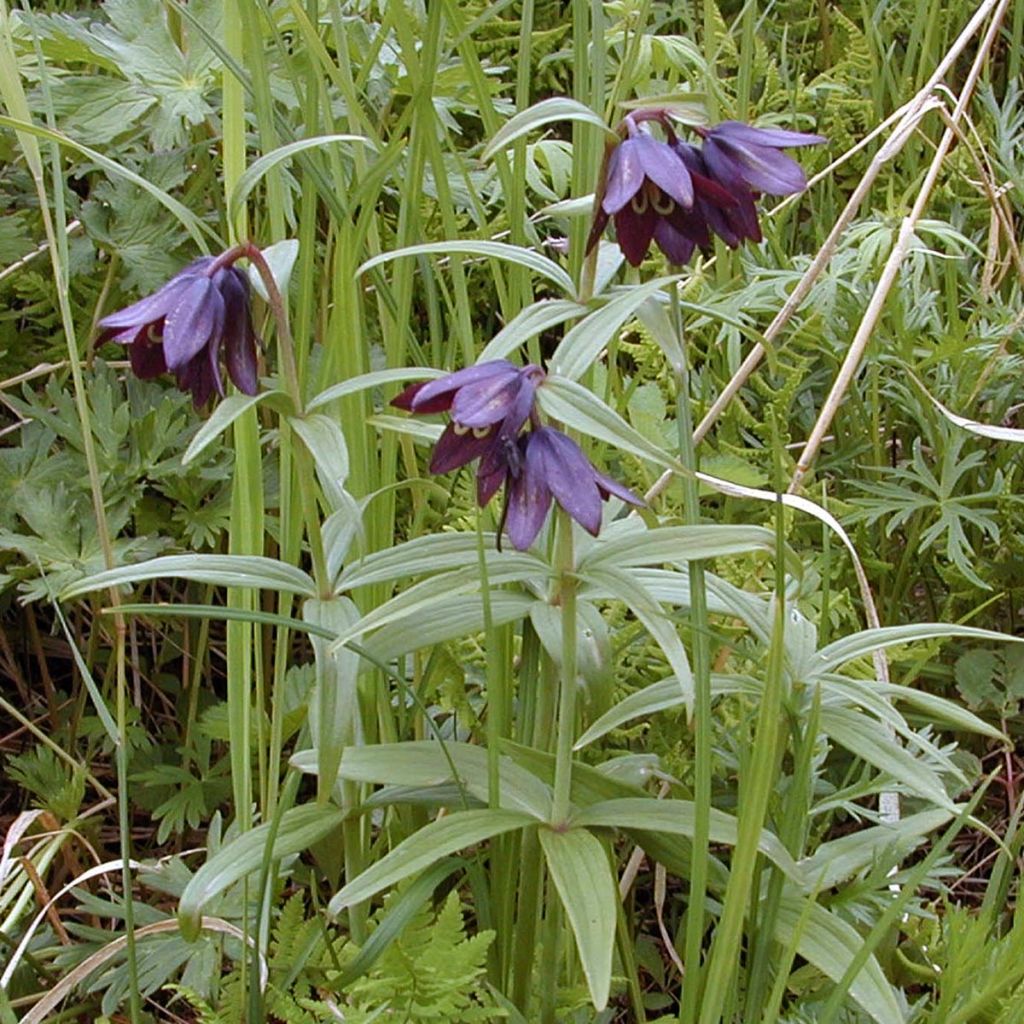

Fritillaire camschatcensis - Fritillaire ou Lys du Kamtchatka


Fritillaire camschatcensis - Lys du Kamtchatka


Fritillaire camschatcensis - Lys du Kamtchatka


Fritillaire camschatcensis - Lys du Kamtchatka


Fritillaire camschatcensis - Lys du Kamtchatka


Fritillaire camschatcensis - Lys du Kamtchatka


Fritillaire camschatcensis - Lys du Kamtchatka


Fritillaire camschatcensis - Lys du Kamtchatka


Fritillaire camschatcensis - Fritillaire ou Lys du Kamtchatka


Fritillaire camschatcensis - Fritillaire ou Lys du Kamtchatka
Fritillaria camschatcensis
Fritillaria camschatcensis
Kamchatka fritillary, Black lily, Black sarana
This plant carries a 6 months recovery warranty
More information
We guarantee the quality of our plants for a full growing cycle, and will replace at our expense any plant that fails to recover under normal climatic and planting conditions.
From €5.90 for pickup delivery and €6.90 for home delivery
Express home delivery from €8.90.
Does this plant fit my garden?
Set up your Plantfit profile →
Description
Fritillaria camschatcensis, also known as Kamchatka fritillary, is a cold-resistant species that comes from northeastern Asia and northwestern North America. In late spring, this bulbous plant bears a flowering stem adorned with astonishing purple-chocolate bell-shaped flowers speckled with pale-yellow. Preferring slightly damp soil and the humus of clear undergrowth, this unique plant will bring a touch of exoticism to a cool and semi-shaded area of the garden.
Fritillaria camschatcensis belongs to the Liliaceae family. Its habitat includes pond edges, meadows, clear forests, rocky beaches, and riverbanks. It can be found from plains to subalpine zones, not far from coasts. It is a perennial herbaceous plant with a bulb from which vegetation emerges from the ground in spring. The bulb has several large fleshy scales, similar to garlic. The stem, which reaches an average height of 35 to 40cm (14 to 16in) when in bloom (sometimes up to 60cm (24in)), bears shiny, bright green lanceolate leaves, up to 10cm (4in) long. They are arranged in whorls, meaning they are inserted in clusters at regular intervals. Flowering occurs from May to July. Elongated ovoid flower buds appear near the top of the stem, hanging towards the ground. They open into bell-shaped flowers with 6 petals that are dark brown to almost black on the outside, revealing a purple-chocolate interior spotted and streaked with pale-yellow. Yellow stamens dominate the centre of the flower. The flowers are pollinated by flies. The blooms emit a curious scent that may not be pleasing.
Fritillaria camschatcensis ideally grows in non-burning sun or at the edge of undergrowth, in rich and light soil that remains moist even in summer. It is a highly decorative plant that will enhance any garden. Plant the bulbs among ferns, rodgersias, hostas, ligularias, and astilbes that thrive in similar environments. Once established, the plant will naturalise and multiply in the garden.
Report an error about the product description
Fritillaria camschatcensis in pictures




Plant habit
Flowering
Foliage
Botanical data
Fritillaria
camschatcensis
Liliaceae
Kamchatka fritillary, Black lily, Black sarana
North Asia
Planting and care
Fritillaria camschatcensis should be planted in autumn at a depth of 15 to 20cm (6 to 8in) in light, well-draining, humus-rich or loamy soil that remains moist even in summer. It tolerates slightly alkaline subsoil, as well as slightly salty soils. Choose a partially shaded or non-scorching sunny exposure. This plant is sensitive to heatwaves and drought, but it withstands cold very well. After flowering, the leaves should be left to allow the bulb to regenerate. This fritillaria can be grown in a pot with well-draining, nutrient-rich substrate that remains moist.
Planting period
Intended location
Care
This item has not been reviewed yet - be the first to leave a review about it.
Haven't found what you were looking for?
Hardiness is the lowest winter temperature a plant can endure without suffering serious damage or even dying. However, hardiness is affected by location (a sheltered area, such as a patio), protection (winter cover) and soil type (hardiness is improved by well-drained soil).

Photo Sharing Terms & Conditions
In order to encourage gardeners to interact and share their experiences, Promesse de fleurs offers various media enabling content to be uploaded onto its Site - in particular via the ‘Photo sharing’ module.
The User agrees to refrain from:
- Posting any content that is illegal, prejudicial, insulting, racist, inciteful to hatred, revisionist, contrary to public decency, that infringes on privacy or on the privacy rights of third parties, in particular the publicity rights of persons and goods, intellectual property rights, or the right to privacy.
- Submitting content on behalf of a third party;
- Impersonate the identity of a third party and/or publish any personal information about a third party;
In general, the User undertakes to refrain from any unethical behaviour.
All Content (in particular text, comments, files, images, photos, videos, creative works, etc.), which may be subject to property or intellectual property rights, image or other private rights, shall remain the property of the User, subject to the limited rights granted by the terms of the licence granted by Promesse de fleurs as stated below. Users are at liberty to publish or not to publish such Content on the Site, notably via the ‘Photo Sharing’ facility, and accept that this Content shall be made public and freely accessible, notably on the Internet.
Users further acknowledge, undertake to have ,and guarantee that they hold all necessary rights and permissions to publish such material on the Site, in particular with regard to the legislation in force pertaining to any privacy, property, intellectual property, image, or contractual rights, or rights of any other nature. By publishing such Content on the Site, Users acknowledge accepting full liability as publishers of the Content within the meaning of the law, and grant Promesse de fleurs, free of charge, an inclusive, worldwide licence for the said Content for the entire duration of its publication, including all reproduction, representation, up/downloading, displaying, performing, transmission, and storage rights.
Users also grant permission for their name to be linked to the Content and accept that this link may not always be made available.
By engaging in posting material, Users consent to their Content becoming automatically accessible on the Internet, in particular on other sites and/or blogs and/or web pages of the Promesse de fleurs site, including in particular social pages and the Promesse de fleurs catalogue.
Users may secure the removal of entrusted content free of charge by issuing a simple request via our contact form.
The flowering period indicated on our website applies to countries and regions located in USDA zone 8 (France, the United Kingdom, Ireland, the Netherlands, etc.)
It will vary according to where you live:
- In zones 9 to 10 (Italy, Spain, Greece, etc.), flowering will occur about 2 to 4 weeks earlier.
- In zones 6 to 7 (Germany, Poland, Slovenia, and lower mountainous regions), flowering will be delayed by 2 to 3 weeks.
- In zone 5 (Central Europe, Scandinavia), blooming will be delayed by 3 to 5 weeks.
In temperate climates, pruning of spring-flowering shrubs (forsythia, spireas, etc.) should be done just after flowering.
Pruning of summer-flowering shrubs (Indian Lilac, Perovskia, etc.) can be done in winter or spring.
In cold regions as well as with frost-sensitive plants, avoid pruning too early when severe frosts may still occur.
The planting period indicated on our website applies to countries and regions located in USDA zone 8 (France, United Kingdom, Ireland, Netherlands).
It will vary according to where you live:
- In Mediterranean zones (Marseille, Madrid, Milan, etc.), autumn and winter are the best planting periods.
- In continental zones (Strasbourg, Munich, Vienna, etc.), delay planting by 2 to 3 weeks in spring and bring it forward by 2 to 4 weeks in autumn.
- In mountainous regions (the Alps, Pyrenees, Carpathians, etc.), it is best to plant in late spring (May-June) or late summer (August-September).
The harvesting period indicated on our website applies to countries and regions in USDA zone 8 (France, England, Ireland, the Netherlands).
In colder areas (Scandinavia, Poland, Austria...) fruit and vegetable harvests are likely to be delayed by 3-4 weeks.
In warmer areas (Italy, Spain, Greece, etc.), harvesting will probably take place earlier, depending on weather conditions.
The sowing periods indicated on our website apply to countries and regions within USDA Zone 8 (France, UK, Ireland, Netherlands).
In colder areas (Scandinavia, Poland, Austria...), delay any outdoor sowing by 3-4 weeks, or sow under glass.
In warmer climes (Italy, Spain, Greece, etc.), bring outdoor sowing forward by a few weeks.



































